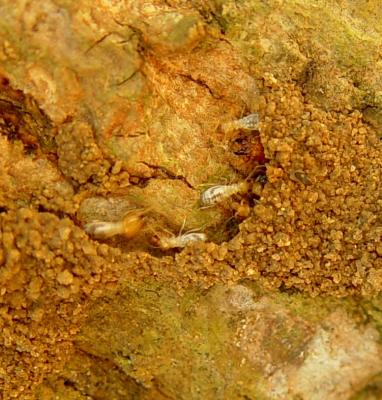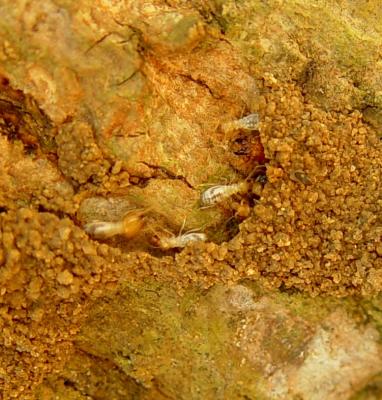Featured Photo

Other Photos

feaured_photo_co
A. M. Varela, icipe
Is this a Minor Pest?
Yes
Minor Pest Title
Termites
Minor Pest Description
Termites can be a serious problem for coconut palms, particularly for young trees in tree nurseries or trees that have just been transplanted into the field. Termites live in the soil in hills, construct tunnel from the hills to the palms and feed on all parts of young coconut palms. Damage occurs mainly during the dry season.
Many plants have a repellent or even insecticidal effect on termites and can be applied as spray directly against termites or as barrier around the trunk of coconut palms:
- Neem: seeds and leaves (extracts or cake)
- Quassia indica or Q. amara: bark and leaves
- Sandalwood: wood
- Chinaberry, persian lilac (Melia azedarach): bark, branches, leaves, extracts
- Euphorbia sp.: "In Tanzania, especially in Dar es Salaam and coast regions, farmers plant with each seedling 2 or 3 sticks of Euphorbia sp. to protect the young palms from termite attack. On nurseries the Euphorbia plants can be planted around the seedbed to prevent access of termites to the palm seedlings and young palms. When the palms have grown big the euphorbia is simply cut down. The practice is widespread and farmers are convinced that it really does keep termites off the susceptible seedlings ( Z. Seguni, MARI personal communication)".
Minor Pest What to do.
- Plant early with the rains.
- Avoid planting on very dry land or on termite mounds.
Minor Pest Position
1
Minor Pest Firstcontent
140
Pest Type
insect
Custom1
Local names; white ants, mchwa (Swahili); Harvester termite ([i]Hodotermes mossambicus[/i]); Bark-eating termites ([i]Macrotermes[/i] spp., [i]Odontotermes[/i] spp.).
Host Plants
Coffee (Revised)
Featured Image
PH Pests Media Gallery
